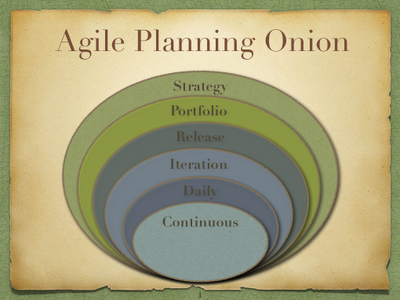Controlled, directed, or organized from the top
As a small business owner, this puts all the responsibility on you and your management team to come up with how you will make your company successful and how each employee will contribute to that success. Input regarding business objectives from lower-level employees in a top down strategic management model is virtually nonexistent. What's the result when top-down strategy is used? Team members feel that they weren't listened to, that their voices didn't count. There simply was not enough full-spectrum collaboration.
bottom-up - adj
From the lowest level of a hierarchy or process to the top
Your management team compiles all the ideas from group brainstorming sessions and departmental meetings to allow you to select the strategies showing the most promise.
hybrid - adj
Of mixed character; composed of mixed parts
Let's be honest here, even in the most Agile of environments upper management still dictates what will be done and by when. Unfortunately they tend to be inflexible, imposing, and controlling when doing so.
 |
| Hybrid, that's what I'm talking about! |
What we are implementing now is a hybrid system that utilizes the top-down management structure to set the scope and deadlines along with the bottom-up team structure dictating the amount of features that can be released in a given time (metric).
Using strong prioritization methods management is able to select features they want in each release in order to deliver the best value to the customer in a timely manner.
Using these metrics management adjusts their scope according to the output of the teams. To get more output they adjust team resources. Gone are the command-and-control ideals that plagued us in the past; for the most part. Nothing is perfect.
Contributors:





























